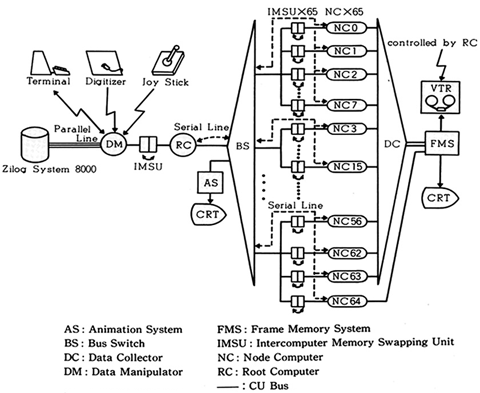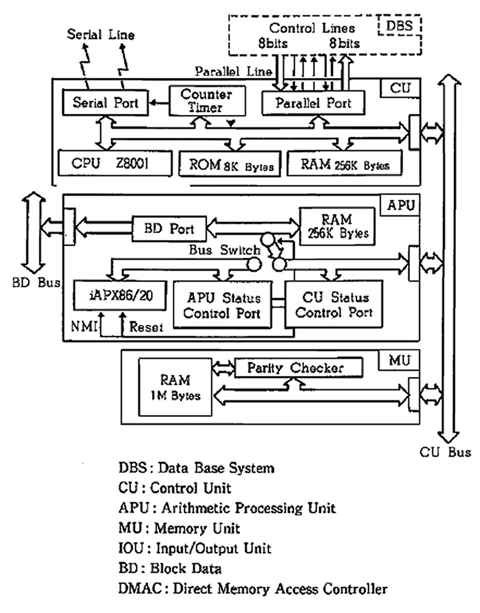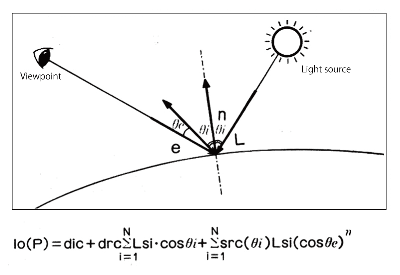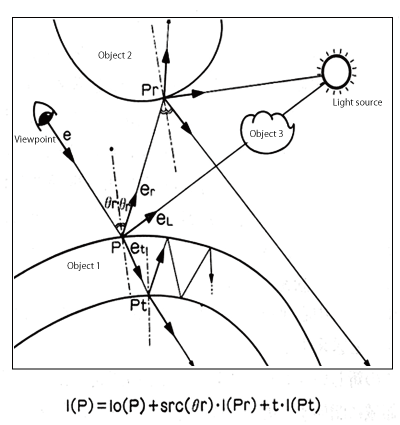

 ●Home >
●Historical Computers in Japan >
●Other Computers >
●LINKS-1 Computer Graphics System
●Home >
●Historical Computers in Japan >
●Other Computers >
●LINKS-1 Computer Graphics System
 Figure 1: Hardware organization of the LINKS-1 image-rendering system
Figure 1: Hardware organization of the LINKS-1 image-rendering system
 Figure 2: Hardware organization of each unit computer
Figure 2: Hardware organization of each unit computer
 Figure 3: Luminance formula
Figure 3: Luminance formula
 Figure 4: Recursive luminance formula
Figures 1 to 4 taken from T. Kawata, I. Shirakawa, and K. Ohmura, "Current Computer Graphics", Systems and Controls, Vol.27, No.6, pp.9–13, 1983.
Figure 4: Recursive luminance formula
Figures 1 to 4 taken from T. Kawata, I. Shirakawa, and K. Ohmura, "Current Computer Graphics", Systems and Controls, Vol.27, No.6, pp.9–13, 1983.